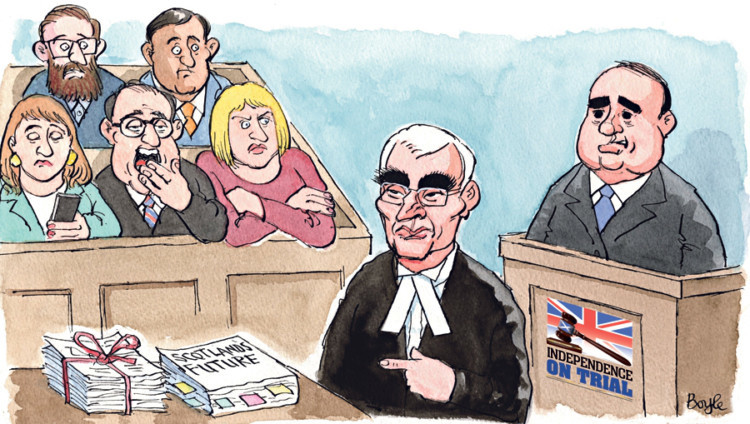
The Sunday Post pledges to cut through the spin and get to the heart of the independence matter.
Who to trust? That’s the question on the lips of hundreds of thousands of ordinary Scots currently ‘sitting out’ of the referendum battle.
You may be one of them fed up with the backbiting, name-calling and lack of straight talking that has dominated the campaign so far.
Both sides of the debate have painted such contrasting visions of our nation’s future under independence that it has left many feeling lost.
We have seen nearly every fact put forward challenged, with the notion of uncomfortable truths replaced by alternative truths.
Even the opinions of neutrals the academics or industry experts are filleted so both pro and anti-independence camps can take something.
Throw in a dizzying array of statistics and arcane economic arguments and it is no wonder close to one million Scots are undecided on how to vote on September 18.
The Yes side would have us believe there are no down sides to independence, yet the pro-Union camp paints a picture of Armageddon if the Union ends. These extremes do a disservice to the electorate.
But away from the spin and scaremongering of the politicians, there is the truth, or as close as we can get to it before voters enter the polling booth.
This is where The Sunday Post enters the debate. Over the coming weeks, it will be our mission to guide our readers through the maze of the referendum’s big issues.
It is no accident we have given our coverage the title ‘Independence on Trial’.
We intend to carry out this trial using six key tests which we have identified as being crucial for the people of Scotland to make an informed, impartial and fair decision.
For each test, both the pro and anti-Union sides will get a chance to make their case, but the main thrust of our work is to make sense of the difference between what
is being promised and what is likely to be delivered and what would be subject to negotiation.
The Sunday Post is not preaching to the converted in the Yes or No corners. This guide is unashamedly pitched towards the readers who are in the middle.
It is becoming increasingly clear there will be no definitive answer on many of the big issues, such as currency or European Union membership, before polling day.
Instead, it will ultimately come down to who you feel you can trust and it is our job to try and inform this judgement with a sensible, rational and critical look at the arguments being played out.
The key tests for independence
Can Scotland afford it?
Would you be better or worse off?
Would the Scottish economy benefit or suffer?
Would Scotland be a fairer place to live?
Would Scotland be a more or less secure place to live?
Would Scotland’s relationship with the rest of the UK and the world be better or worse?

Enjoy the convenience of having The Sunday Post delivered as a digital ePaper straight to your smartphone, tablet or computer.
Subscribe for only £5.49 a month and enjoy all the benefits of the printed paper as a digital replica.
Subscribe